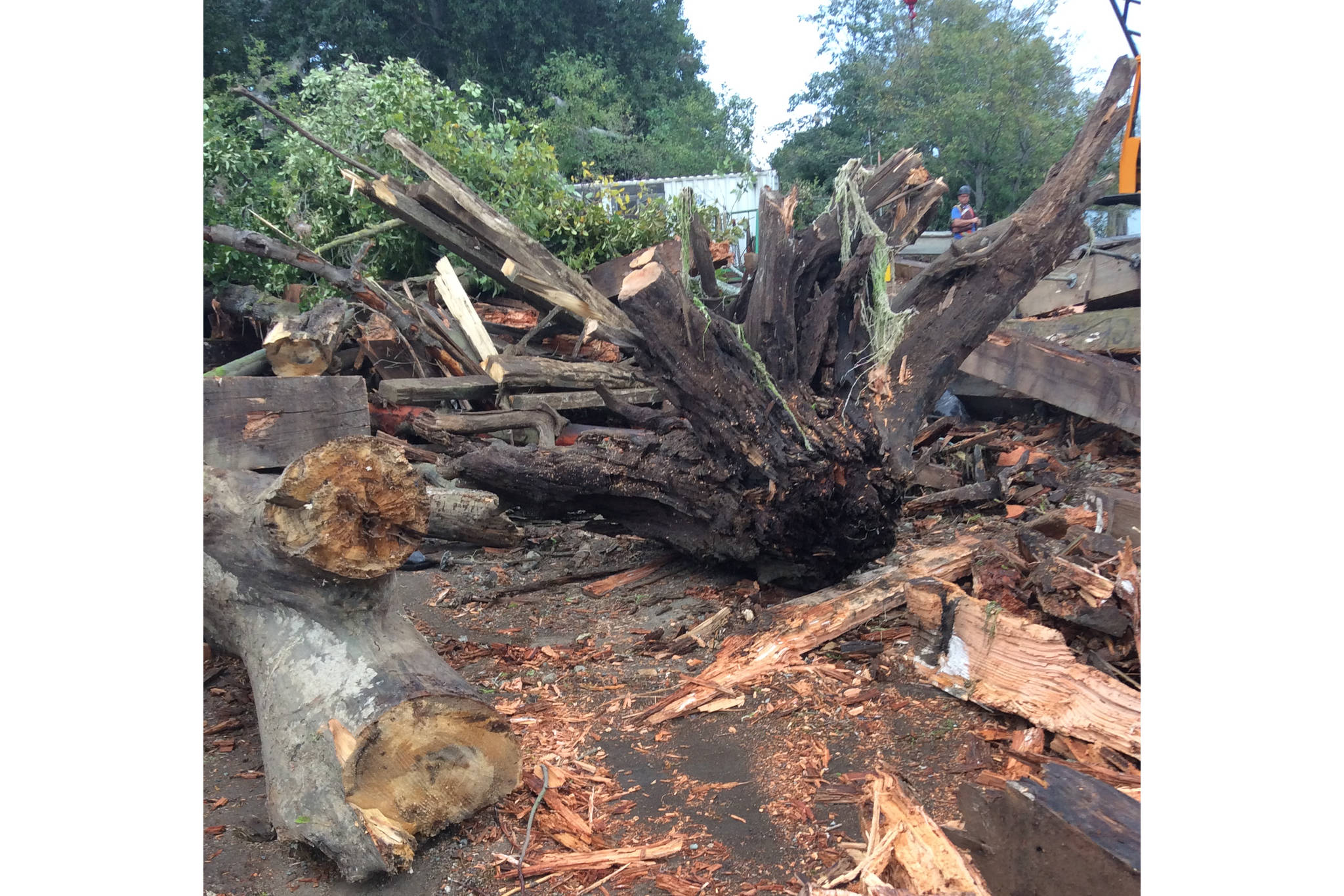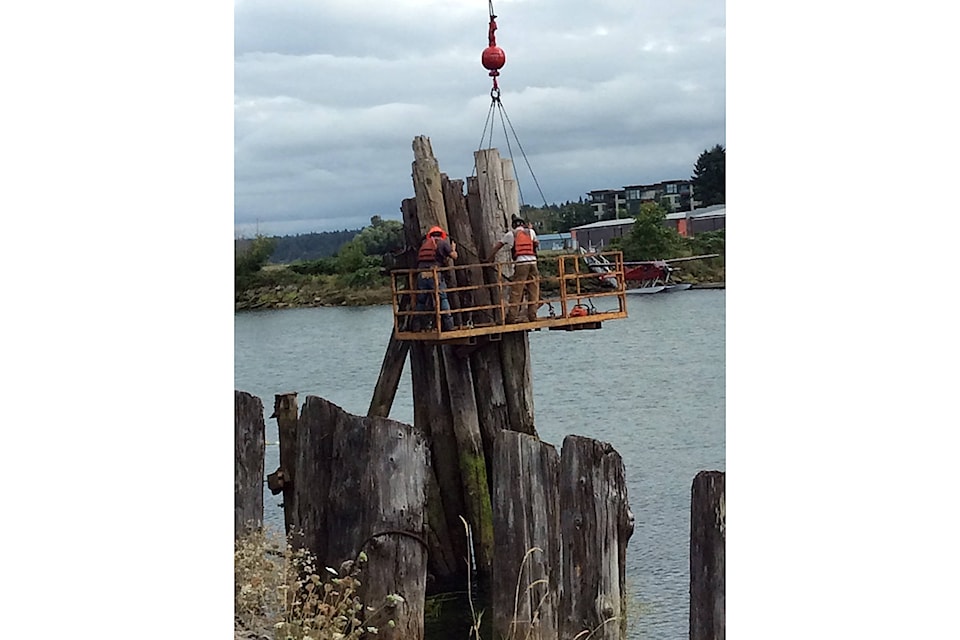The removal of the dock, dolphins and pilings from the water lot area of the Kus-kus-sum property went smoothly last week.
Gadd machinery was mobilized to the site Saturday, Aug. 17 and assembled over the weekend.
Work commenced on the following Monday and the final pilings were removed during the weekend of Aug. 23-24.
“While we were prepared for many potential incidents (the most serious being a potential oil spill) none were encountered during the project,” said Warren Warttig, Interfor’s project manager and RP biologist. “We would like to thank all of the kayakers and boaters for respecting the water work zone; this made the reclamation project go much more safely and efficiently.”
The surface of the dock was removed first; unfortunately, the wood was rotten and unsalvageable. Then the team worked to remove the dolphins. As dolphins are a group of pilings lashed or bolted together, the team, suspended by the crane, worked to detach the pilings, which the crane then vibrated and pulled out of the sediment. The pilings were up to six metres deep. During the process, much garbage and trash were removed from the site and the water area.
“We were disappointed to have to retrieve 11 grocery carts from the Courtenay River, they clearly do not belong there,” said Warttig.
The team also removed some large woody debris from the Courtenay River, specifically several large root wads and some waterlogged timber. Project Watershed technical director, Dan Bowen, noted that these elements will be stored on-site and used to help complex the new shoreline area and Hollyhock connection channel during the restoration process. Large woody debris can provide refuge and foraging opportunities for salmon as well as cool water temperatures, slow water flow, and help reduce erosion.
The dock removal process piqued the curiosity of many passersby.
“We received an increase in hits to our website and received donations both online and on the roadside adjacent to the site,” said Caila Holbrook, Project Watershed’s manager of fundraising, outreach and mapping. This is good news as Comox Valley Project Watershed Society has approximately $8,000 to raise from the community in under two months.
“Our next deadline, Oct. 20, is coming up fast and after that we have another $35,000 to raise by Christmas,” said Holbrook. “We urge people to look into our alternative gift cards for upcoming, birthdays, weddings and Christmas gifts. They are available on our website at www.projectwatershed.ca/alternative-gifts.”
With the dock, dolphins and pilings out of the way, Interfor can now transfer the water lot leases with the title of the property. While Comox Valley Project Watershed is leading the fundraising and restoration of this initiative, they will not own the property once it is acquired. The City of Courtenay and the K’ómoks First Nation will share ownership and maintenance of the property. The details of this arrangement are currently under negotiation.
“We were very excited to be part (although a small part) of the larger reclamation of the old Field Sawmill site,” said Warttig. “ We hope everyone has the opportunity to contribute to this legacy in the heart of our community.”
***
Project Watershed invites the public onto the site Friday and Saturday, Aug. 30 and 31 from 9:30-11:30 a.m. Visitors will be able to paint a salmon for a donation of $25 or more, tour the site and play an educational game with their children.

